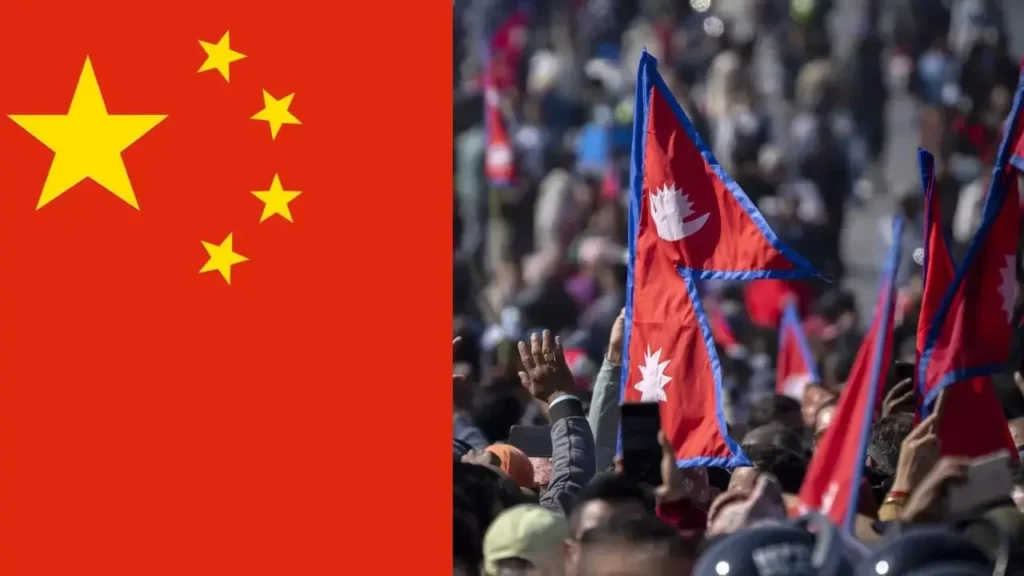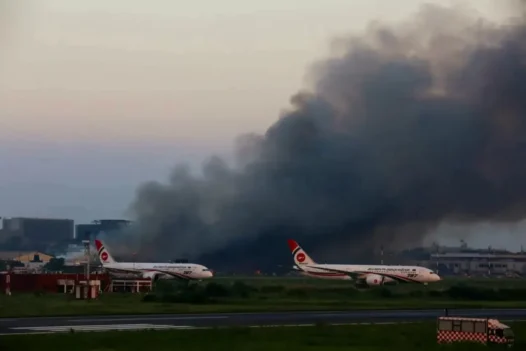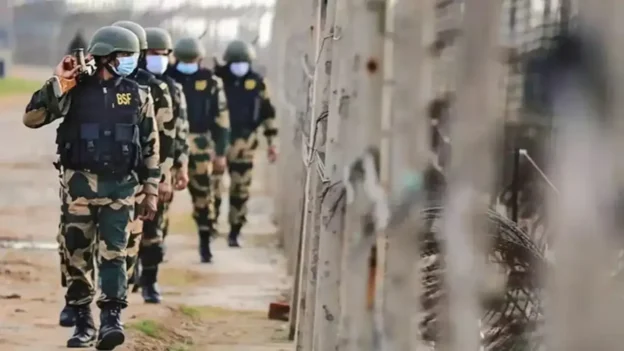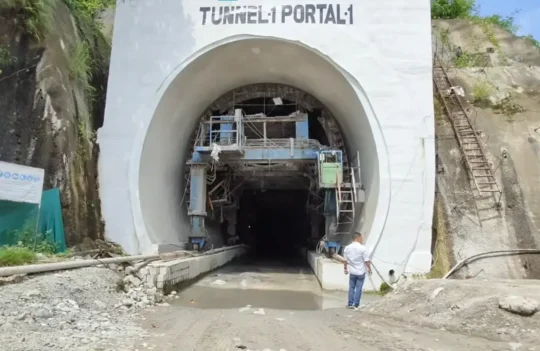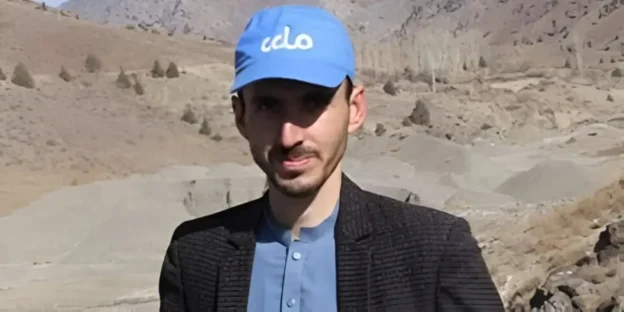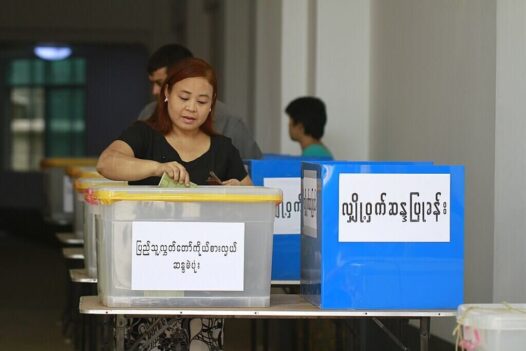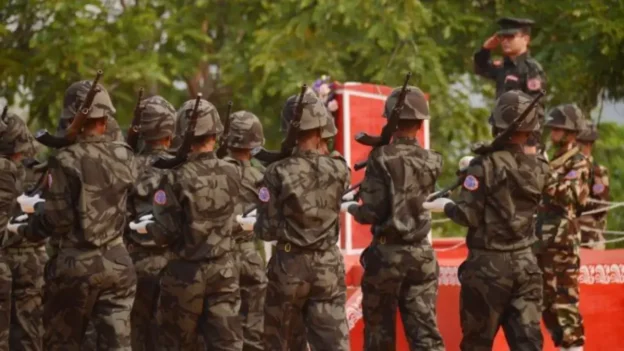Kathmandu has quieted, but the echoes of those fiery nights still linger — a faint, bitter reminder of the days when a restless generation rose against a government it had long stopped believing in. In early September, Nepal’s Gen Z revolt — led by those born after the mid-1990s — shook the political foundations of a fragile republic. What began as a protest against corruption and an ill-fated social-media ban turned, within hours, into a wave of fury that toppled the government and thrust the country into its most uncertain chapter in decades. In the aftermath, analysts from Delhi to Beijing, from Washington to Geneva, are asking a question Nepal has faced for centuries: when the small mountain nation trembles, how far do the ripples travel?
For the United States, the tremors have been more academic than strategic. Michael Kugelman, the widely cited South Asia analyst who writes the “South Asia Brief” for Foreign Policy, was quoted by the BBC as saying that Washington’s interest in Nepal’s turmoil is “comparatively low.” The Trump-era cuts to foreign aid, he explained, had already hollowed out many U.S.-funded projects in the country. Nepal, from Washington’s view, no longer sits on the front line of American strategic concern. Kugelman believes the anxieties are limited to the safety of U.S. personnel, scattered infrastructure programs, and a modest investment portfolio.
So, it appears that America is watching from a polite distance — a luxury neither India nor China can afford. For Delhi and Beijing, the story unfolding in Kathmandu is not a passing headline. It is a potential hinge moment in South Asia’s fragile balance. To the Chinese, Nepal has long served as both buffer and bridge: a soft frontier shielding Tibet’s southern rim, a corridor for trade, and a testing ground for influence in South Asia.
“The magnitude of change in so short a time has surprised everyone,” media reports quoted Gao Liang, deputy director at the Nepal Studies Center of Sichuan University, as saying. Gao attributes the upheaval to long-unaddressed social fissures that have finally cracked open. Yet he also sounds a note of apprehension: if instability persists, it could stall the very projects that symbolize Sino-Nepal friendship — from cross-border railways to hydropower investments under the Belt and Road Initiative (BRI). “Sustained turmoil,” he warns, “would be a significant loss for both countries. Stability serves the interests of Nepalis and the Chinese alike.”
Beijing’s reaction to Nepal’s change in government was unusually restrained. In congratulating former Chief Justice Sushila Karki on her appointment as interim prime minister, the Chinese foreign ministry conveyed its wishes with a mild, almost ritualistic affirmation that “China respects the independent path of development chosen by the Nepali people.” But the restrained diplomatic note concealed a deeper sense of discomfort. Beijing’s congratulatory message followed, for the first time, that of the Dalai Lama, who congratulated Nepal’s new leader in public. From his self-exile in Dharamshala, India, Tibet’s spiritual leader praised the “close cultural ties” between Tibetans and Nepalis and also thanked Nepal for its previous hospitality to Tibetan exiles. That was an act, however wrapped in good wishes, that smelled unmistakably of geopolitics. How could Beijing have missed it?
The coincidence was striking. Nepal, officially committed to a one-China policy, recognizes Tibet as an inalienable part of the People’s Republic of China and has long cracked down on any Tibetan political activity within its borders. Yet the Dalai Lama’s outreach to Kathmandu, coming at a moment of political vacuum, injected a sensitive element into an already volatile mix. For Chinese strategists, it was a reminder of the 1960s, when CIA-backed Khampa rebels operated from Mustang district in northern Nepal, or the protests staged by Tibetan exiles in Kathmandu between 2008 and 2014 — episodes Beijing saw as products of Western provocation. In that sense, the Gen Z uprising, which witnessed the participation of some Tibetan-origin youth groups wearing “TOB” (Tibetan Original Blood) T-shirts, could easily trigger China’s security reflexes.
China’s anxiety is nothing new. Since Mao, Chinese leaders — from Zhou Enlai to Deng Xiaoping and Xi Jinping now — have repeated to their Nepali counterparts a reliable refrain: geography puts a brake on how much Beijing can deliver. “You are naturally closer to India,” they have repeatedly explained, “and we cannot assist you to the extent that India will.” The Chinese understand the asymmetries — economic, cultural, logistical — that bind Nepal to its southern neighbor. Still, each time Nepal’s internal politics gets out of hand, Beijing fears that the resultant void will attract Western plotting too close to Tibet’s vulnerable flank.
This time around, the fear appears more severe. The Gen Z uprising has highlighted a new generation of NGOs, activists, and digital campaigns with funding networks that extend across frontiers. One person, Sudan Gurung of the NGO “Hami Nepal,” rose to the fore during the uprising in the guise of a volunteer hero. His group, according to its website, has had backing from Western and Tibetan-related organizations such as “Students for a Free Tibet” and the Barbara Foundation. Gurung has denied any political agenda, but Chinese observers identify in such networks the footprints of what they term “foreign penetration” — a combination of civil-society activism and soft-power intervention that Beijing has long associated with color revolutions.
In Beijing’s policy elite, the reaction was rapid but subdued. In the immediate aftermath of the uprising, Foreign Ministry spokesman Lin Jian declared that Beijing had “full confidence in Nepal’s ability to manage its internal affairs” and looked forward to “the early restoration of social order and stability.” It was Chinese diplomacy at its finest — positive on the surface, but beneath it lay a thicket of security interests. Analysts in Chengdu and Beijing were wondering even then what message had been conveyed in the quiet phone calls between Chinese officials and Nepal’s Army Chief Ashok Raj Sigdel. No transcript was issued, but no one doubts that Tibet and the security of Chinese investments were at the heart of the discussion.
To grasp China’s present cautiousness, recall how it has learned to fine-tune influence in Kathmandu. In 1960, when B. P. Koirala, Nepal’s first democratically elected prime minister, visited India, New Delhi committed to aiding Nepal with the whopping sum of Rs 14 crores — almost Nepal’s annual budget in those days. A month later, Koirala traveled to Beijing and was given a grant of Rs 10 crores. Asked to match India’s grant, Premier Zhou Enlai hesitated: matching India’s generosity, he argued, would upset Delhi and in the end harm Nepal. Better, opined Zhou, to assist on the sly. That sense of realism has guided Chinese conduct since then. Beijing desires connectivity across the Himalayas — but not at the price of driving Nepal into a crisis that could provoke Indian or Western reprisals.
In fact, Beijing’s experience with Nepal’s Western connections has regularly been fraught. The American Millennium Challenge Corporation (MCC) compact that was ratified in 2022 set off a chain of indignant Chinese pronouncements — ten in total — warning that it could create a “Pandora’s box” for U.S. strategic access to the region. Xi Jinping’s 2019 Kathmandu visit, during which Beijing floated an extradition agreement to contain “anti-China activities,” added proof of how Tibet still stands in the cracks of Chinese security thinking. After the agreement collapsed under Western pressure, Xi was reported to have seethed that those conspiring against China from Nepali soil would have their “bones crushed into powder.” That imagery still lingers in the background of these contemporary debates.
What makes this moment especially tense is that the Gen Z uprising happened during a period of fragile religious-political transition within the Tibetan world itself. The succession issue of the Dalai Lama — an issue Beijing regards as a matter of fundamental sovereignty — is again on the world agenda. Just weeks earlier, Chinese scholar Gao Liang of Sichuan University was in Kathmandu talking about seventy years of Nepal-China ties. Asked how Nepal should navigate the succession issue, he answered in diplomatic but firm tones: “Nepal has always supported the one-China principle. We hope that will continue to stay the same. What we also hope is that no Chinese plot will ever be hatched on Nepali soil to attack China.” What was said seemed harmless, but to Nepali ears it was a threat loaded with meaning — a reference to the Beijing-defined “uncompromisables” or the so-called “red lines” it had set to define what Kathmandu could or could not do.
The fine line Nepal has to toe now is no different from treading a tightrope between two elephants. India, which was already uncomfortable about the resurgence of Chinese infrastructure building under the BRI and about Nepal’s overtures to Beijing in the earlier regime, is keeping a keen eye. In private, Indian officials reminisce about how Beijing’s influence in Sri Lanka and Bangladesh increased through highways and ports before local politics in those countries turned turbulent. New Delhi is not keen on seeing that pattern repeated in Nepal. The new regime in Kathmandu — tenuous and transitory — will have to exercise subtle diplomacy to give both neighbors the assurance that it stands by its non-alignment slogan, which has been easier to say than to live up to.
Nepal’s own foreign policy ideal has always been “neutral friendship with all.” But in practice, the principle regularly fails. Former PM K. P. Sharma Oli’s participation in a Chinese military parade, even after declaring fealty to a non-aligned policy, was disapproved at home. And when Beijing’s welcome to Karki followed that of the Dalai Lama, critics wondered if Nepal’s diplomatic process had lost its direction. Questions embarrassing and irresistible: who let the protests escalate into violence? Why was the army slow to assume control while the capital was burning? And, above all, who benefits when Nepal drifts into anarchy?
In Beijing’s mind, the end justifies the means. What Beijing worries about is that turbulence in Kathmandu will flow into Tibet or entice Western sympathy for the Tibetan cause. The arrival of NGOs, student organizations, and online activists with global links only adds to Chinese suspicion. Analysts of geopolitics suggest that China almost never attacks beforehand, yet it is “always ready to fight any power militarily if the unity and sovereignty of the Chinese nation are challenged.” Since Xi Jinping came to power, Chinese strategy, they point out, has shown the characteristics of the Ming dynasty — enlarging rather than diminishing its military influence. In that light, the Gen Z uprising, with its surprising alliances and international resonances, may seem to Beijing less of an internal uprising and more a trial of its regional deterrence.
If China chooses to act more assertively — diplomatically or economically — it will inevitably drag India and the West into the Himalayan theater. History provides a precedent. In the 1950s, while the Cold War drew ideological divides throughout Asia, India tried to restrict American influence in Nepal. Now, with trade tensions with Beijing and new U.S. involvement in the Indo-Pacific, Delhi’s calculus may again point to restraining Chinese influence in Kathmandu. The mistrust triangle — India, China, the West — is closing in around a country struggling to master its own transition.
Symbolism is eerie. Nepal has, once again, become a mirror reflecting Asia’s big powers’ worries. In the rubble of the Gen Z uprising are questions that go beyond the present crisis: Can a small country maintain its independence while its streets become stages of competing narratives — of security, democracy, faith, and fear? Can China resist its temptation to dominate the periphery even if that periphery encircles Tibet? Can India refrain from exploiting Nepal as a buffer zone rather than as an equal partner?
For now, Prime Minister Sushila Karki faces a labyrinth. Her government must rebuild institutions shattered by the revolt, calm a disillusioned youth, and navigate a geopolitical storm. Every move will be watched — from Beijing’s Ministry of State Security, from South Block in New Delhi, from think tanks in Washington that barely cared until the uprising forced them to. The danger is not only external; it is also moral. If Nepal allows itself to become a pawn in other nations’ games, it risks losing the very independence its revolutions — past and present — have fought to protect.
In private discussions, Chinese scholars now invoke Nepal as a “gray-zone frontier” where soft power and hard security intersect. They also admit that overt intervention would be counterproductive, yet they insist that “red lines” — specifically on Tibet — have to be maintained. In Western diplomatic circles, one hears “youth resilience” and “civil society empowerment.” Between these euphemisms lies the hard reality of Nepal’s predicament: each gesture, each grant, each congratulatory statement carries geopolitical meaning.
As evening falls on Kathmandu, the capital sits between fear and possibility. The protests have passed, but embers still smolder in the eyes of a generation that had asked for change and was given chaos. Across the mountains, China calculates how to secure its flank and tread no farther. India listens for the sound of disturbance along its border. The West looks for a crack. And Nepal — wounded, defiant, and unsure — finds itself again at the fault line between empires, learning that in this quarter of the globe, even silence becomes a provocation.

